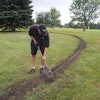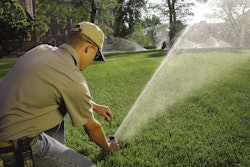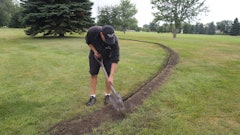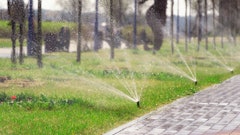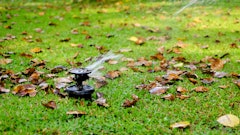
Colorado State University’s (CSU’s) study, “The Hidden Value of Landscapes: Implications for Drought Planning,” is the first study of its kind in the state to quantify how much water landscapes use and their environmental, economic and social benefits. The study looked at the 3 percent of total Colorado water used for landscapes and found a significant return on investment from this water.
“The use of 3 percent of Colorado’s available water to maintain green landscapes is a legitimate allocation of water resources,” said Tony Koski, professor and Extension turf specialist in CSU’s department of horticulture and landscape architecture.
The study was led by Koski; Zach Johnson, associate professor in the department of horticulture and landscape architecture; and Alison O’Connor, a horticulture agent with CSU Extension in Larimer County.
“We were aware of a lot of anecdotal information about the benefits of landscapes, but this is the first time the information has been synthesized and analyzed,” said Johnson.
Environmental, Economic and Social Landscape Benefits
Some of the environmental, economic and social landscape benefits the study notes include:
- 48 pounds of carbon dioxide are absorbed by one tree each year.
- Trees provide air quality benefits for Colorado cities valued in the high six figures.
- 25 percent fewer crimes occur in public housing with landscapes.
- Every $1 invested in a home landscape yields a 135 percent return on the home value.
- 7 percent higher rents are paid on commercial properties with attractive landscapes.
- 45 percent cooler temps occur when cars are shaded by trees.
- Outdoor urban spaces increase mental and physical health, and children who spend time outdoors are better learners.
The awareness of water planning is at an all-time high in Colorado with the completion of the Colorado Water Plan, and this study can serve as a tool for water policymakers tasked with ensuring there is enough water to weather future droughts and projected population growth.
“When water supplies diminish, it is easy to argue that irrigating landscapes is not the best use of water, but there are serious consequences when urban landscapes and parks are targeted,” said Koski. “The unintended consequences from the cash for grass buyouts in Nevada and California resulted in trees and other plants dying and succumbing to disease when deprived of regular irrigation. It’s impossible to instantly replace a 30-year-old shade tree; the cooling benefits it provides are lost forever as is the character and functionality of parks and neighborhoods.”
Reduced Water Consumption
The study notes that, in the past decade, Colorado water users reduced per-capita water consumption by slightly under 20 percent through a combination of using best management practices on landscapes, improved irrigation technologies, tiered rate structures and increased general awareness among users that they should conserve.
“In Colorado, drought is not a matter of if, but of when,” added Johnson. “Increased conservation is necessary for drought planning and this study provides water planners information to adopt a holistic approach by factoring in the value of landscapes when formulating water policy.”

